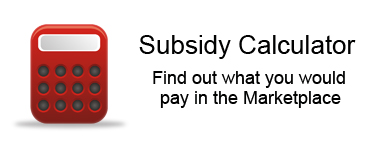With all that is going on with the Affordable Care Act (ACA) and whether and to what extent employers have to offer insurance to their employees, many employers may not be paying much attention to how their Employee Assistance Programs (EAPs) fit within the ACA. Ignorance is bliss, for now. However, employers should begin to scrutinize their EAPs to make sure they qualify as excepted benefits. If the EAP is not an excepted benefit it is subject to the ACA market reforms that take effect this year, and consequently, the employer-sponsor could be subject to hefty penalties for non-compliance.
Currently, an EAP is considered an excepted benefit (and thus not subject to the ACA market reforms, among other legal obligations) so long as it does not provide “significant benefits in the nature of medical care.” EAPs typically offer a wide-range of benefits to address circumstances that might otherwise adversely affect an employee’s work and health. They are typically free of charge and often provided through a third-party vendor. The devil is in the details, however, and an EAP that provides medical care is considered a group health plan and is subject to the ACA market reform requirements (and HIPAA) unless it meets the criteria for being an excepted benefit.
There is no universal definition of an EAP and there is little guidance as to what constitutes “significant benefits in the nature of medical care.” For now at least, an employer can use a “reasonable, good faith interpretation” of the phrase to design a program that is not subject to the ACA market reforms. In 2015, however, EAPs get a bit more regulated.
On December 24, 2013, the Departments of Labor, Health & Human Services and the Treasury jointly published proposed rules for excepted benefits – including EAPs – that tighten the exception. Beginning in 2015, an EAP will be considered an excepted benefit only if 4 conditions are met:
(1) It does not provide “significant benefits in the nature of medical care;”
(2) it is not coordinated with benefits under another group health plan;
(3) no employee premiums or contributions are required; and
(4) there is no participant cost-sharing.
Although the Departments declined to provide additional guidance on what it means to provide “significant benefits in the nature of medical care” in this publication, they promised additional guidance in the future. As for ensuring an EAP is not “coordinated with benefits under another group health plan,” the Departments explained that this can be achieved if (a) the EAP does not function as a “gatekeeper” to benefits under the other group health plan; (b) eligibility for the EAP is not be dependent on participation in the other group health plan; and (c) benefits in the EAP are not financed by the other group health plan.
Why the attention to EAPs now? It appears that the Departments want to preserve an employee’s eligibility for premium tax credits in the Marketplace (aka the Exchange) if an EAP is the only benefit offered to the employee by his or her employer (or the only affordable benefit). Generally speaking, if an employee has access to minimum essential coverage (MEC) through her employer, she will not be eligible for tax credits through the Marketplace. If an employer offers nothing but an EAP and that EAP is not an excepted benefit, it could be considered MEC.
On the flip side, it is unclear if an EAP could satisfy the minimum value requirement of the MEC offered by a large employer, under the Employer Mandate. Nevertheless, the focus of these proposed rules seems to be on protecting the employee, not on discerning a situation in which a large employer might satisfy its Employer Mandate obligation with an EAP. Indeed, the Departments promise further guidance to ensure EAPs are offered as supplemental benefits to other coverage and not the only coverage offered to employees. It is conceivable, however, that a small employer might offer an EAP and no other group health plan. In that situation, the EAP must qualify as an excepted benefit to preserve the employees’ tax credit eligibility in the Marketplace.
While ignorance can be bliss, employers should take a close look at the benefits available through their EAPs, sooner rather than later. Any employer offering an EAP may unwittingly subject itself to ACA penalties up to $100 per day per enrollee if the EAP does not satisfy the excepted benefit criteria and is subject to the ACA market reforms that it cannot by design comply with (like the prohibition on annual limits). In truth, this risk is present on the first day of the EAP plan year in 2014. Although an employer sponsoring an EAP can find safety in a “reasonable, good faith interpretation” of what it means for a plan to provide “significant benefits in the nature of medical care” in 2014, less subjective analysis will be required in 2015.
The proposed regulations can be found here.


